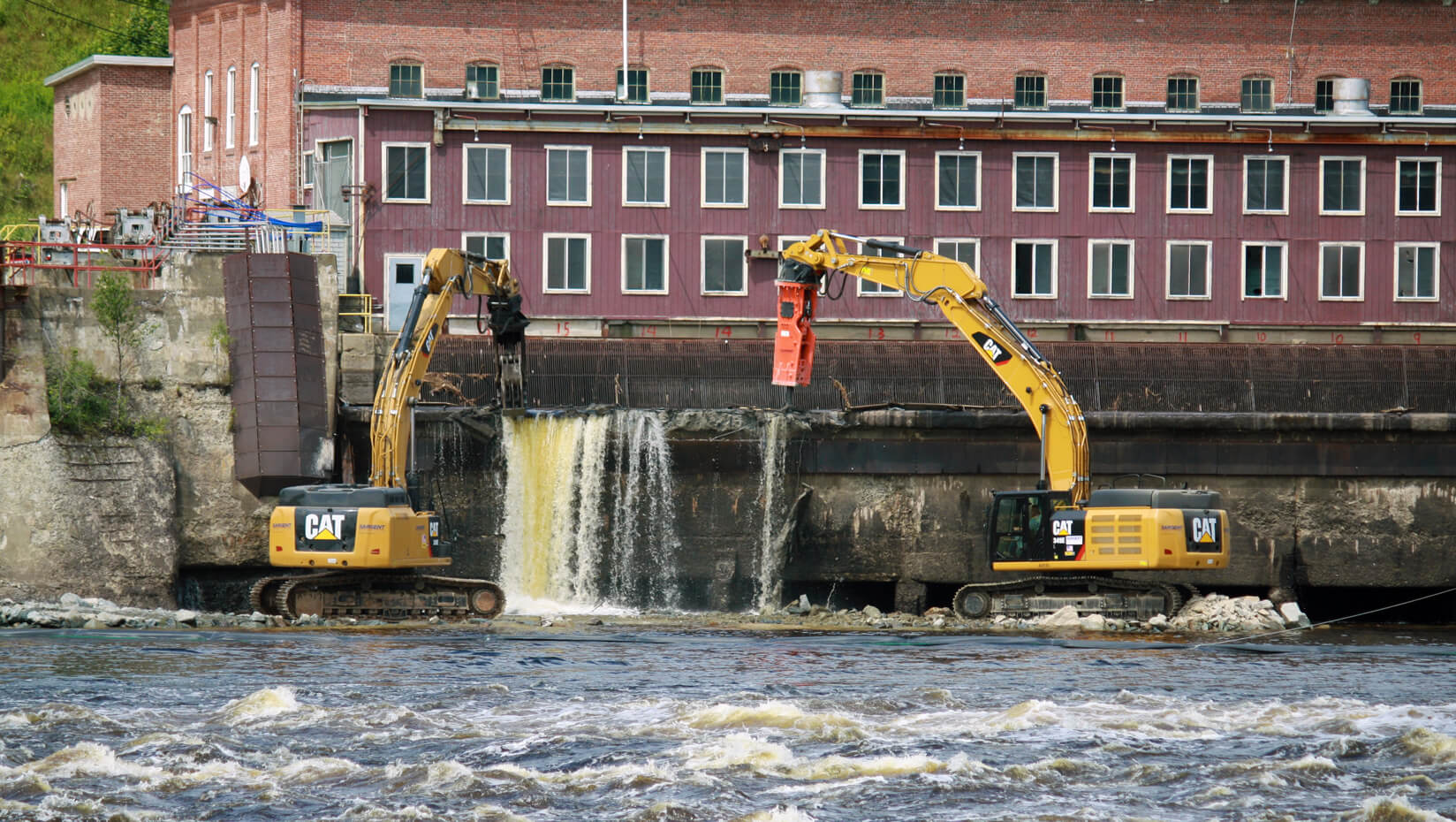
Research focuses on New England dam problems and win-win solutions
Decisions about whether to build, remove or modify dams involve complex trade-offs that are often accompanied by social and political conflict. A group of researchers from the natural and social sciences, engineering, arts and humanities has joined forces to show how, where and when it may be possible to achieve a more efficient balance among these trade-offs. Their work is featured in a paper published in the Proceedings of the National Academy of Sciences (PNAS).
What’s the dam problem?
In some parts of the world, there are proposals to build thousands of massive new dams for hydroelectricity, flood control and irrigation. In other regions, such as the U.S., there is a growing movement to restore rivers by removing dams that are obsolete, pose safety risks or have large negative impacts on ecosystems. In both instances, difficult trade-offs and divergent stakeholder preferences can greatly complicate decision-making processes.
For example, conservation groups and resource agencies seeking to restore sea-run fish often favor the removal of dams that prevent these species from reaching their spawning grounds. But other stakeholders may value the diverse services that dams can provide, including water supply, hydroelectricity and reservoir-related recreation.
“This is exactly the kind of problem where you need an interdisciplinary team with the right mix of expertise to help quantify trade-offs and identify promising solutions from multiple perspectives,” says Sam Roy, lead author from the University of Maine.
Maximizing economic and ecological benefits
The research team collected a database of over 7,500 dams in New England as a “model system” to search for decisions that provide efficient outcomes for multiple criteria valued by stakeholders. These criteria include habitat availability for migratory fishes, hydroelectric power production, water storage, drinking water supply, water quality, recreational use, dam breach risks, waterfront property impacts and decision costs.
Using an economic concept known as the production possibility frontier, combined with a scenario-ranking technique, the researchers identified potential dam decisions that maximize the combined ecological and economic benefits, for individual watersheds as well as the entire New England region. Given the large size of the database (the largest of its kind in the world), together with the enormous number of potential solutions, a machine-learning approach was used to simulate the many trade-offs and find solutions that maximized total benefits.
The team’s approach can be used to identify many different kinds of decisions that result in efficient outcomes given resource and technological constraints, including ones that remove or modify specific dams to produce the greatest increase in fish habitat for a small reduction in hydropower, or the greatest improvement in dam breach safety for a small reduction in drinking water supply.
“We also find that it is possible to improve the trade-offs between certain criteria by coordinating multiple dam decisions at larger spatial scales,” says Roy. “This means that there are many opportunities to find win-win solutions that can simultaneously improve dam infrastructure, freshwater ecosystems and decision costs by selectively removing, modifying or even constructing specific dams in a river basin.”
Interdisciplinary research that connects the dots
Roy, a postdoctoral fellow at UMaine’s Senator George J. Mitchell Center for Sustainability Solutions, worked with colleagues from the University of New Hampshire, the University of Rhode Island and the Rhode Island School of Design.
“One of the strengths of our interdisciplinary approach is that we can examine many different trade-offs using an integrated, quantitative framework,” says co-author Emi Uchida, an environmental economist at the University of Rhode Island. The team also collaborates with diverse stakeholders (e.g., tribal communities, government agencies, conservation organizations) to strengthen the scientific basis of decision-making.
The authors cite the multi-stakeholder Penobscot River Restoration Project as a highly successful example where coordinating dam removal and alteration through broad stakeholder engagement dramatically reduced conflict, efficiently allocated resources, and aligned with pre-existing constraints of dam ownership and regulation.
“Our model can help identify specific decisions that gain the support of a broader stakeholder audience by providing desirable infrastructure and ecosystem trade-offs,” Roy says. “This may encourage funders and practitioners to make these decisions a reality. Based on our research, there may be many more future decisions that repeat the success of the Penobscot River Restoration Project.”
Support for the Future of Dams Project is provided by the National Science Foundation’s Research Infrastructure Improvement award 1539071.
Contact: Samuel Roy, 207.581.3286; samuel.g.roy@maine.edu
